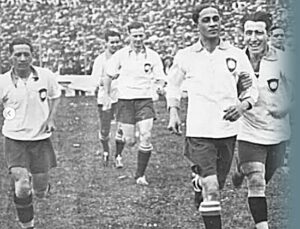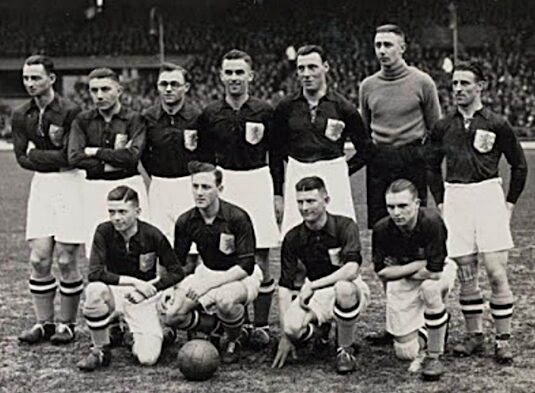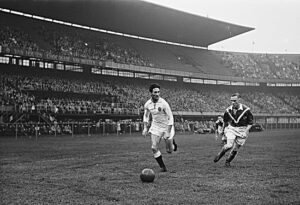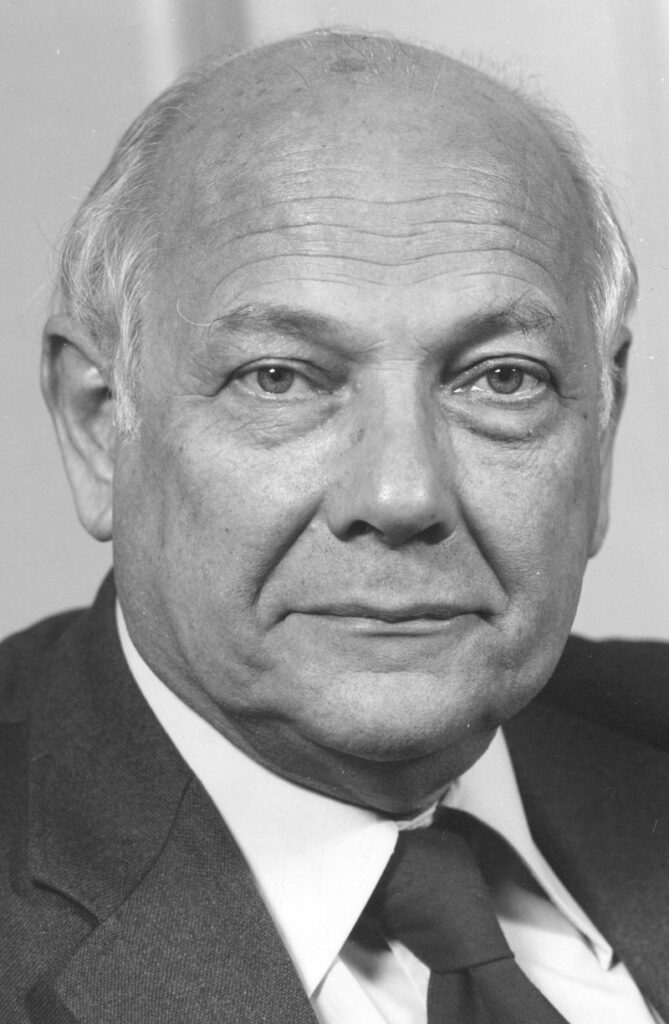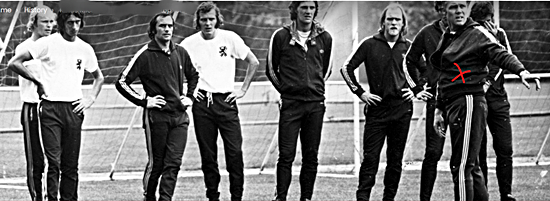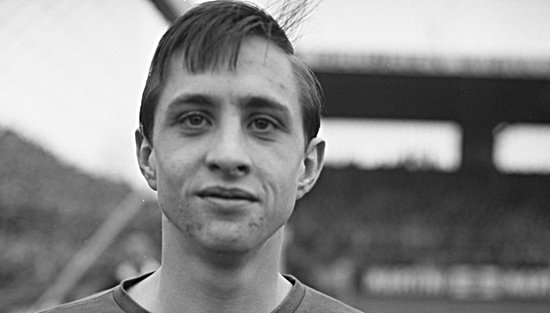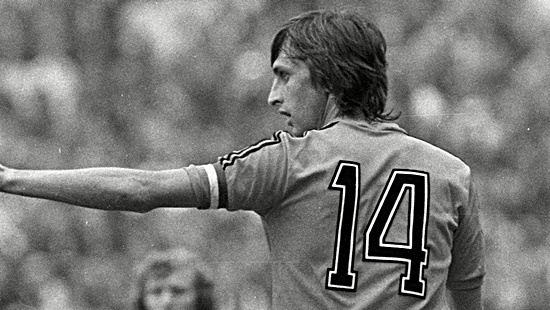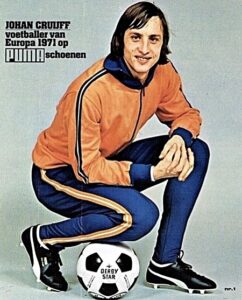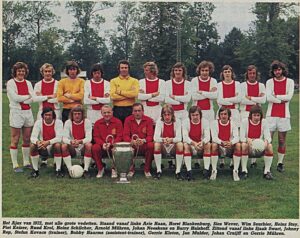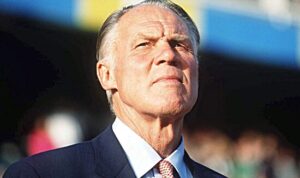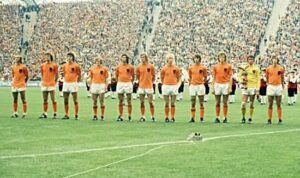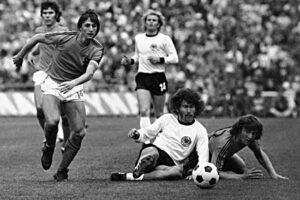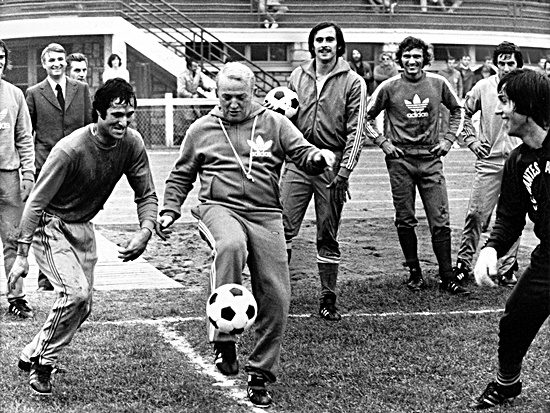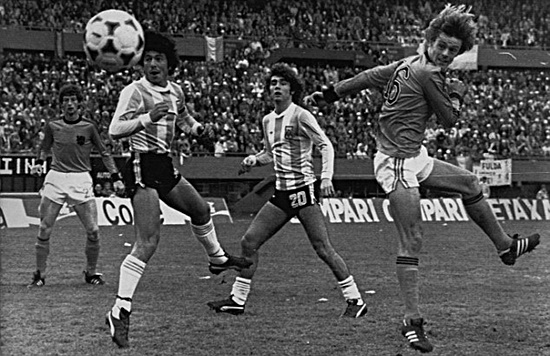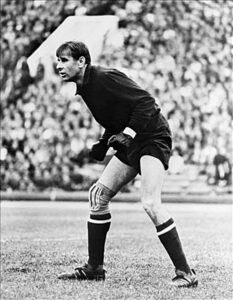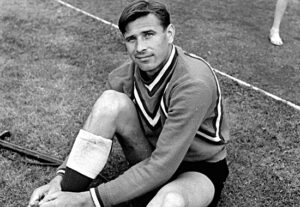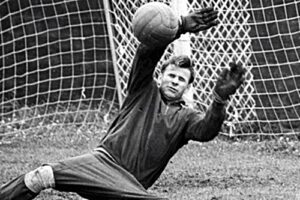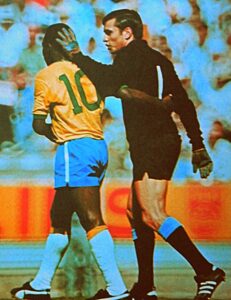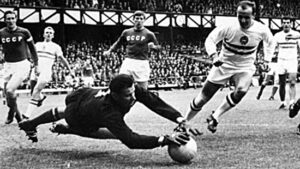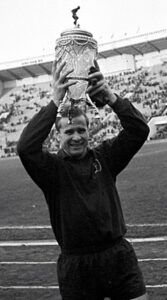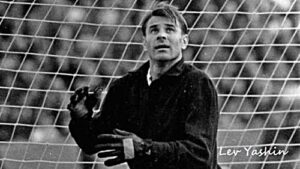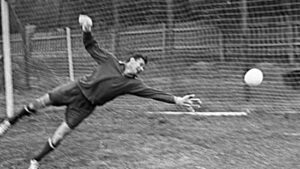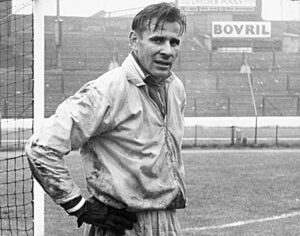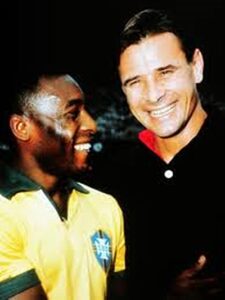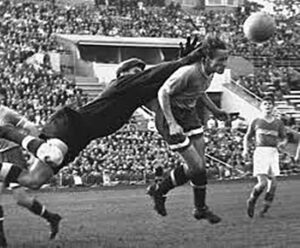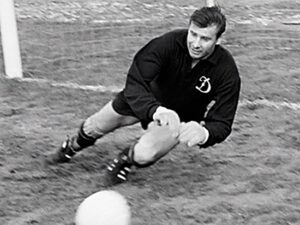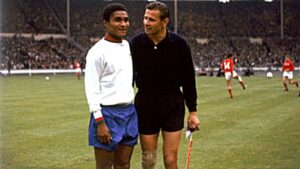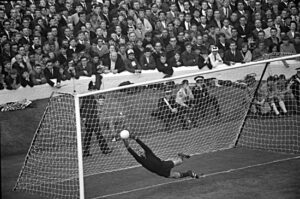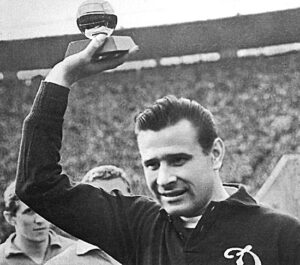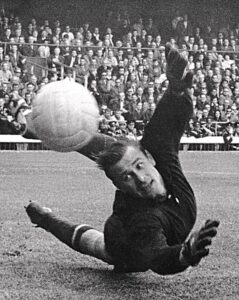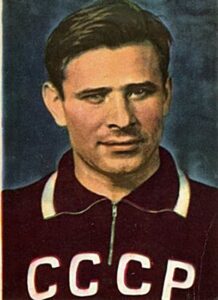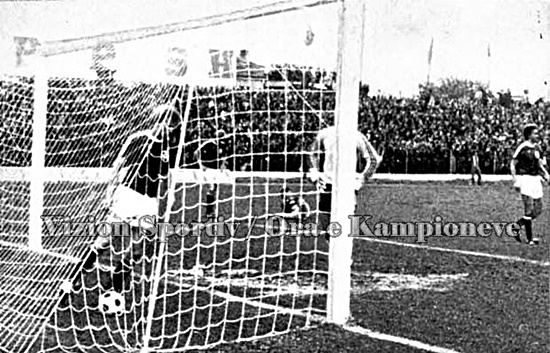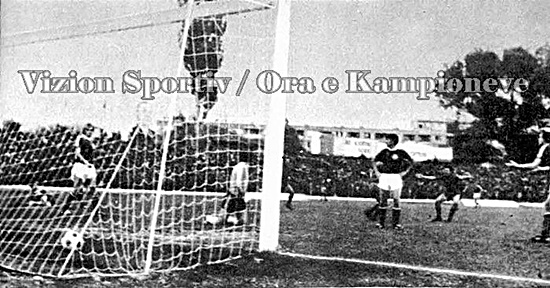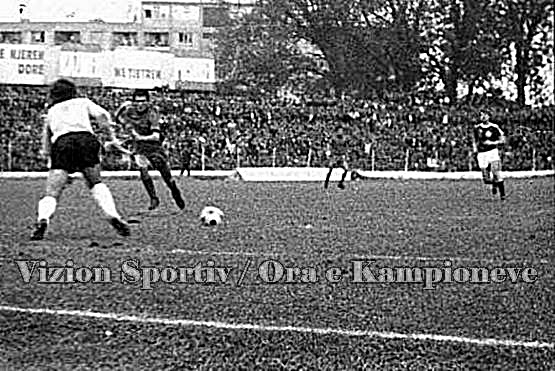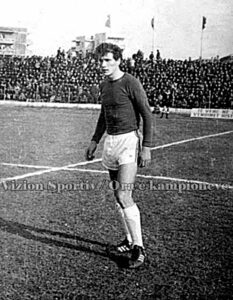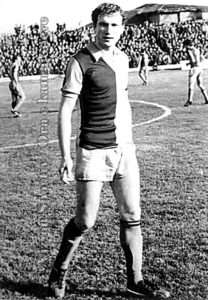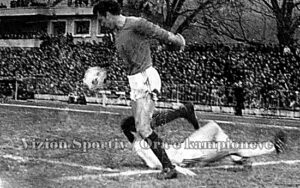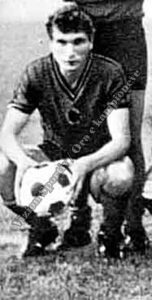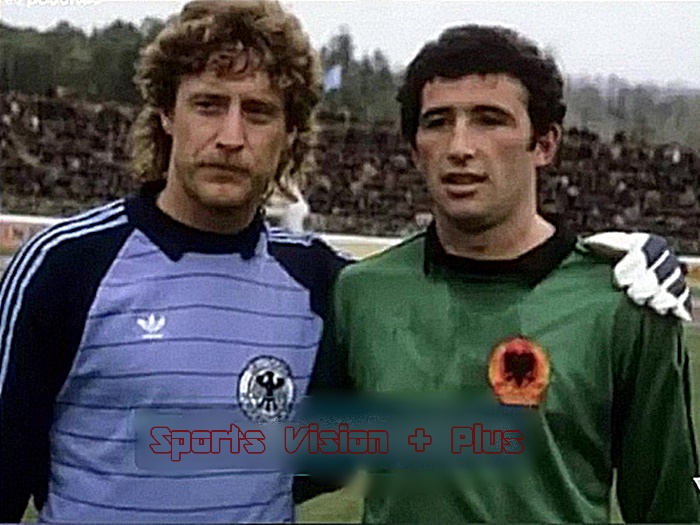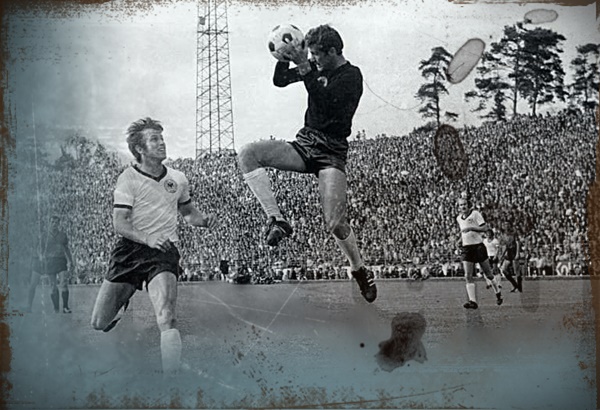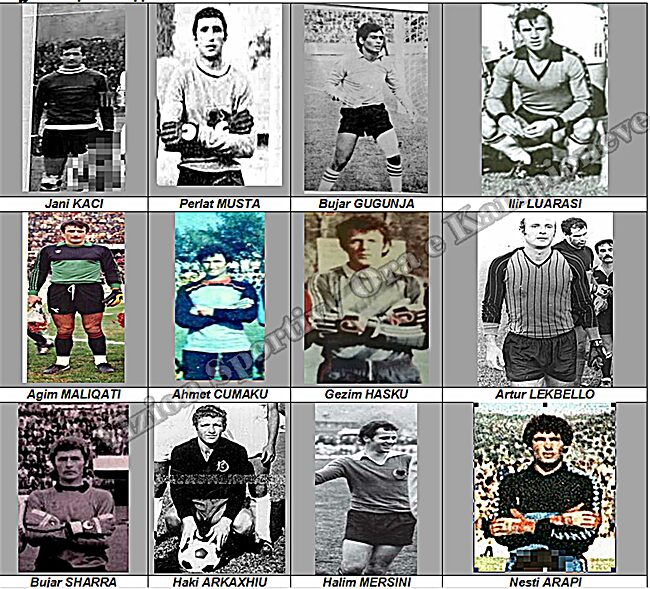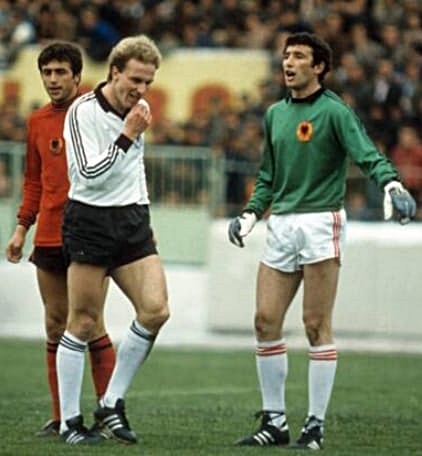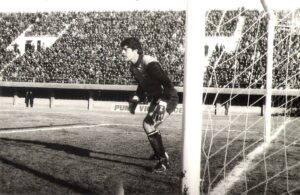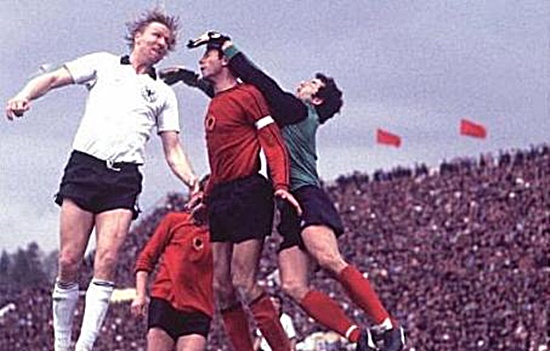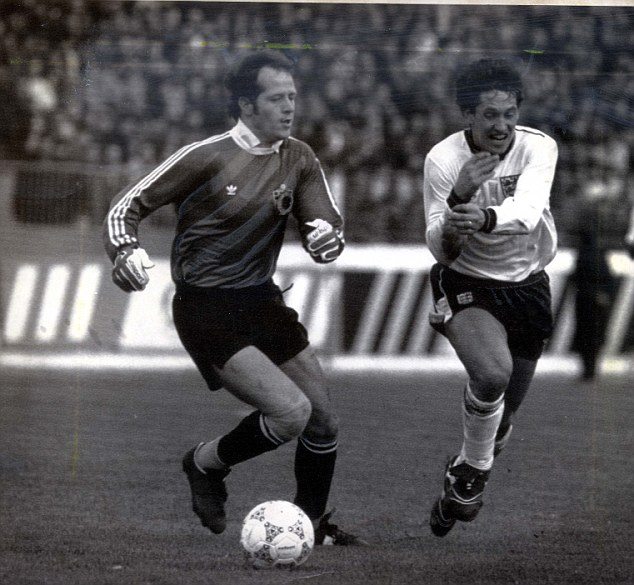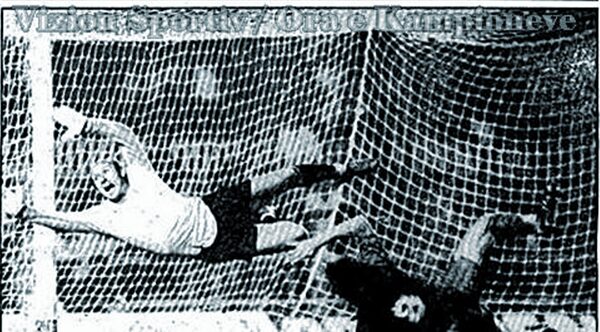This is the section of this page titled "History through Photos" under the cover of Arian Muraj, started in March 2020 in Facebook Page "Sports Vision / Champions Hour".
The Top 10 of the First Part
Enjoy!!!
1.
Eduardo Galeano, the Uruguayan who was awarded the Nobel Prize for his book "The Open Veins of Latin America", is the author of the bestseller "Soccer in the Sun and Shadow". Despite the fact that such books are not translated in Albania, those who are lucky enough to know English or even Greek can download or buy it online.
It is a masterpiece of sports literature, especially football literature!
____________________________
2.
The Trio!
Vasillaq Zeri
I don't remember if I was in third or fourth grade. I don't remember exactly if it was 1978 or 1979. Also, I can't say for sure that I was a Dinamo fan, but I was definitely a fan of Llaqi, Vasillaq Zeri! That afternoon, my father took me to the stadium to watch Dinamo-Skenderbeu match.
Shortly before the end of the match, when with a goal from Zeri, Dinamo was already leading 1-0, Llaqi was found outside the area with a defender in front of him. He dodges it effortlessly, running away to the left, as if by magic. At the entrance to the area, the last defender intervenes. Again, as if by magic, he dodges it by running away from the right and after this mini slalom he finds himself facing Jani Kaci.
Jani, the national team's goalkeeper at the time, rushes to his feet but Llaqi passes the ball over his body and alone enters the goal with the whole ball! What would a child in Brazil feel if he saw Garrincha score a goal like that? What does a child feel today in Barcelona if Messi scores in such a way? Those feelings were exactly what electrified me, the child, back in "Qemal Stafa" Tirana...
Shyqyri Ballgjini
Cloudy afternoon. The "Qemal Stafa" stadium is packed. The return match, the final for the Balkan Cup Albania-Romania. The second final match. The defeat in Romania, 1-3, is sought.
Shyqi, is team captain. Now, when the score has reached 6-1 for the U21 / called "Shpresat" of Albania, he has scored already and has served the others to do so. It is his match! Just before the end, outside the area, passing the ball over his head, he leaves the last defender behind and heads for the goal. The goalkeeper rushes out to stop him. The defender from behind, with both hands, with all his might, pulls Shyqi away from the body and his shirt. Before collapsing, Shyqyri Ballgjini manages to release a parable over the goalkeeper, sealing the Albania-Romania score 7-1! After the match, as captain of the team, now Balkan Champion, he receives the cup from the hands of Loro Boric! In the same temple, against the same opponent, from the hands of a legendary captain who is just as much a protagonist! Coincidences that are repeated are no longer called coincidences!
Ilir Pernaska
Dinamo-Flamurtari is playing. The end of the 70s again. The minute is '87. The score is 0-0. After a cross from the right, the goalkeeper comes out and punches the ball. Outside the area, the "killer" Ilir Pernaska, rises in the air. He stops the ball with his chest - (my father rises and shouts GOOOL) - and without letting it fall to the ground with a powerful and technical shot; he sends it straight into the triangle. I am in the so-called 20th stand of the "Qemal Stafa" national stadium, among the fans of a full stadium, without realizing that in that atheist state, I had to thank God (and my father, a Dinamo fan) that I was there again, in that temple where everything was allowed and every age had a reserved place. Where such puzzle pieces completed a chapter of brilliant football history.
A very special chapter in the history of national football signed by Vasillaq Zeri - Shyqyri Ballgjini - Ilir Pernaska. A chapter in the history of a decade of Dinamo with over 300 goals in 400 matches!
_____________________________
3.
Perlat Musta
The photo shows Perlat Musta, the king of the goal, on the same level as his great counterparts in Europe and the world. The point is not about the level of play, of course the same as them, but about the appearance. Adidas!
This brand, so close but also so unattainable, this "forbidden apple" for the Albanian athlete. Well, in this photo taken from the famous West Germany - Albania match of 1984, it shows Perlat Musta in the "king's robe", complete with "adidas", as befits a great goalkeeper.
Just like Perlati really was! Jersey, shorts, socks and "adidas" gloves. Shoes too. But...
The truth was completely different. In Albania, including the national team, they played with Albanian-made products. Cotton jerseys that lost their color after two washes, shoes produced by the "Hamid Shijaku" factory that barely lasted a year, and goalkeeper gloves were out of the question...
Goalkeepers, however, had an advantage. In international competitions, they could swap jerseys and use them (the goalkeeper's special attire, different from the other 10 players) or they could borrow the uniform of their opposing colleagues, including gloves. Someone else, after a thousand twists and turns, could even buy them abroad. Musta and Luarasi were "lucky" to visit the invisible "planet" that was called "Outside the State" in the Albanian language of that time! Also, Jani Kaci with the national team in the early 80s and on loan with Vllaznia, for the European Cups, Halim Mersini with U21 (Shpresat) ,
17 Nentori, and Flamurtari, Artur Lekbello, the charming and beloved balded headed, the hero of Barcelona with Flamurtari, these and some others, stood out from the jerseys they used in the poor Albanian clothing national football. They should also think about their friends and colleagues in Albania.
Where was the difference between them?
Perlati! He was the "photo model"! In every one of his appearances, you enjoyed watching him! Of course, the "Puma" jersey of the Austrian Lindenberger or the "Uhlsport" one of the Greek Nikos Sarganis looked the same on his body and suited him, but Perlati with the "adidas" jerseys of the greats Jean Mary Pfaf and Harald "Tony" Schumaker, besides looking from afar that he was taller than anyone else in Albania, in Europe he demonstrated that he was not the "unimportant" goalkeeper of a small team or country but was one of the best in Europe! It seemed that in appearance, with his favorite "adidas" jerseys.
_______________
4.
Panajot Pano
This photo, where Panajot Pano elegantly avoids Horst Dieter Hoetges, captain of the world runner-up, West Germany, is now a symbol that expresses what 11 hearts can achieve on the field and on the other hand, Germany, for the only time lying on the ground in its history of qualifying for European competitions. It was 1967.
It is the small stadium built by the Italian fascists in 1941, at the end of the grand boulevard built by them, at a time when the best urban engineers were trying to bring to life the idea that the capital of the small Italian protectorate state would develop and grow urbanistically with the same glamour as their capital, Rome!
It is a small stadium with 15,000 seats. The stadium that, ironically, would bear the name of a 22-year-old young man killed by fascist hands, Qemal Stafa, as always, at the end of the grand boulevard but, baptized by proud Albanians "Martyrs of the Nation", would become a temple for them for five decades!
From the first official European competition, the Balkan Cup for national teams in 1946, with Albania as the winner, to the victories with Belgium and Greece. There was something magical about this small stadium with 15,000 seats. On special days, it became as big as the match being played in it! Well, in that match, 28,000 people were in the stadium. It was Albanian great temple, within which there would always be a place for all its devout believers!
_________________________________
5.
April 1981
"Qemal Stafa" National Albanian Stadium
World Cup qualifiers Spain 1982.
Again, Albania plays this time, against the European Champions, West Germany. In the photo, Horst Hrubesch, Jani Kaci and Safet Berisha in an aerial battle.
Again, the "Qemal Stafa" stadium. After the `60s, enlarged with 5,000 more seats, with its second floor. What the fans called "20ties stands" and with it, the capacity reaches 20,000 spectators. However, the stadium does not change its nature that, "magically" inflates according to the values of the match.
In this match, where west German Bernd Schuster probably played the biggest match of his short career with Germany but also in other matches such as Albania vs W. Germany in March 1983.
In this stadium, Albania vs Italy, U21 teams (Shpresat) 1984,
Albania - Belgium 1984, "17 Nentori" - Flamurtari in 1986 and many others, the number of spectators increased reaching 30,000
Simply incredible!
6 .
AS Roma!
(top from left) Toninho CERESO, Paulo Roberto FALCAO, Ubaldo RIGHETTI, Agostino DI BARTOLOMEI, Francesco GRAZIANI, Franco TANCREDI. (seated) Roberto PRUZZO, Bruno CONTI, Sebastiano NELA, Dario BONETTI, Michele NAPPI.
May 30, 1984
Roma at the forefront of Italian football successes. It is the decade of the 80s. A year that, as an auspicious sign for the clubs but perhaps as a disaster for the "Azzurra" National Team. Roma representing Italian club football in the grand final of the Champions Cup.
The pressure is great on them! * Italian clubs have been forgotten in the drawer of the 60s! Milan 1963, Inter 1964, Inter 1965 and again Milan 1969, are four trophies brought to Italy two decades ago and Roma, gives signs of a great revolution that is represented first by the colors yellow and red.
* The final is in Rome.
Liverpool are at their best, with great experience after two cups in recent years, and Roma have no international experience in major club finals. They come only with the heart of a lion and with Bruno Conti, the engine of Italy's World Champions, Graziani, the man who paved the way for Italy to the title two years ago, Roberto Pruzzo, its goal man, Tancredi, the excellent goalkeeper, Brazilian stars Falcao and Cereso, the "rock" Di Bartolomei and Italy's great talent, Righetti.
In fact, today, "the soul cries" when you think of such a defeat!
....
After 120` of dramatic play, Roma, which after a foul in attack by O'Neal against its goalkeeper Tancredi, finds itself behind with a score of 0-1, fights for the impossible. They almost achieve it but... loses on penalties the great final, dreamed of. Conti and Graziani, each other miss from 11 meters. It is the evening of the "charlatan" Bruce Grobbelar, the goalkeeper of Liverpool.
Neal scores first for Liverpool while Pruzzo equalizes spectacularly with a header “La curva sud” the section reserved for the most ardent Roma fans ("i romanisti"), fully packed 8 hours before the start of the match. Falcao, due to muscular problems, has been withdrawn from the list of penalty takers.
Nine shots determine the winner: Liverpool! The experts win!
The end belongs to the dark chronicle of a violent night. War between fan gangs in the city. English journalism accuses - "Your premeditated revenge"!
Liverpool has just written another bright page in history. Roma will also go down in history. It is the precursor of the successes of Italian football for the next 15 years. Like Italy itself, in Euro 1980 and World Cup 1990, Roma itself, will fail to lift a major title on its home turf and this will happen again, after the second final lost against Inter for the U.E.F.A. Cup.
But it is precisely this evening in May 1984 that will give Roma a respected place and name in the history of Italian football and the memories of football fans.
______________________________
7.
Nadia Comăneci, the Romanian gymnast who made history in this sport, especially at the 1976 Olympic Games in Montreal with three gold medals at the age of 14 and as the first woman to receive the maximum score of 10.0, even six 10.0s in all events (apparatus) programmed in this sport.
_______________________
8.
Manuel Francisco dos Santos! Initially known by his relatives by shortening his name from Manuel to "Manè". As tradition dictates in Brazil, he was "baptized" and later immortalized in football history as the "little bird" - Garrincha! The second most popular footballer in history in Brazil after Pele.
Coincidentally, the stadium named after him "Manè Garrincha" is the second largest in Brazil after "Maracana". However, Garrincha remains the first in the world of football for two things, his dribbling and low intelligence. According to tests, his IQ level corresponded to that of a first grader.
With one leg 7cm shorter than the other and a deformed "S" shaped spine, Garrincha was unpredictable for any defender. The king of dribbling, he played football for fun!
He did it with such passion that, after the final against Sweden, 5-2 and Brazil being declared world champion for the first time, he was upset because he didn't know that the matches ended after the final. His entertainment was the entertainment of the people, which is why he got another nickname "allegria de povo" - the joy of the poor!
Brazil never lost a single match when Pele and Garrincha played together. The best Brazilian player and scorer of the '62 World Cup. At that time, a newspaper headline went down in history for him with the title "What planet does this man come from?" while Garrincha himself, in that World Cup, scored the historic "banana" goal, a fake shot from 20 meters.
He died poor and an alcoholic at the age of 50. Everything else in his life, apart from football, was simply scandalous! We prefer not to talk about these...
___________________________
9.
Ailton Correa de Arruda - "Manga"
He remains the most famous goalkeeper in Brazil today! He was so well-known that, in his honor, since 1976 when he was still active in football, his birthday, April 26, has been marked as Goalkeeper's Day in the Brazilian calendar!
He had become a myth, because of his deformed fingers! The goalkeeper of the "Selecao" national team in the 1966 World Cup in England, "hung up" his gloves at the age of 44!
___________________________
10.
Agustin Kola!
The symbol of the former "17 Nentori", more precisely, of Tirana!
The one who always scored in all possible ways. King of the game in the air who scored constantly with header but also by "bicycle", turns, with powerful shots from distance with his "bitter" left foot, in general a striker who, as much as you can believe he came from the English "Premiere League", or he was also a "Paolo Rossi" Albanian within the penalty area.
He came out bloody from the match but...also from training! Today, the man Agustin Kola! Always without hypocrisy, with words that often hit and for this, bravo to him.
The truth hurts but never kills! Precisely for this reason, Agustini is perhaps the only one who maintains the same dimension of the name of a great footballer even after retiring from playing football. Of course, as yesterday and today, he enjoys the status of a man respected by fans of other teams.
End of the 1st "Top 10" Part!
It was published for the first time in March-May 2020 in Facebook Page "Sports Vision / Champions Hour"
(C) Copyright By Arian Muraj.
https://www.sportsvisionplus.com/history-through-photos-1st-part/
_____________________
Sports Vision +Plus / Champions Hour in activity since 2013
